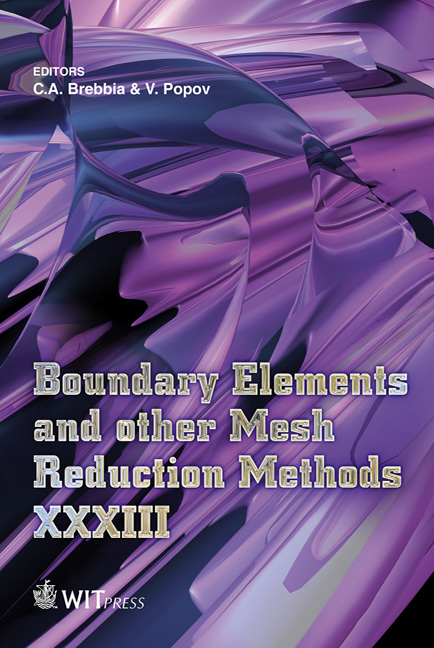Application Of The Boundary Element Method To 2D And 3D Bubble Dynamics
Price
Free (open access)
Transaction
Volume
52
Pages
12
Page Range
73 - 84
Published
2011
Size
919 kb
Paper DOI
10.2495/BE110071
Copyright
WIT Press
Author(s)
Z. Fu & V. Popov
Abstract
The Boundary Element Method (BEM) was applied to the solution of bubble dynamics in an ideal fluid. Two-dimensional (2D) and three-dimensional (3D) models have been developed and the results have been compared to the analytical solution. The results show that only the 3D model can correctly represent the physics of the problem. The influence of the model parameters on the solution has been investigated for a single bubble. Keywords: BEM, numerical simulation, bubble dynamics. 1 Introduction A great amount of work has been conducted in the area of bubble dynamics which can be seen in the review papers by Plesset and Prosperetti [1] and Feng and Leal [2]. During the course of bubble oscillation, jet formation is a common phenomenon. As pointed out by Tsiglifis and Pelekasis [3], even when the bubble shape is initially very close to spherical, asymmetric collapse happens at the following stage and it gives rise to jet formation. The bubbles in the acoustic field can oscillate or they can collapse producing high temperatures and possibly jets. The creation of high temperature spots can help chemical reactions and this phenomenon is used in sonochemical reactors. With advancement of the computational technology, numerical studies have been carried out in order to understand the bubble dynamics. One of the numerical techniques used is the Boundary Element Method (BEM) which possesses unique advantages in respect to other numerical techniques for these types of problems. Indirect BEM has been employed by Wang and Khoo [4] who pointed out that both source and dipole distribution methods encounter
Keywords
BEM, numerical simulation, bubble dynamics





